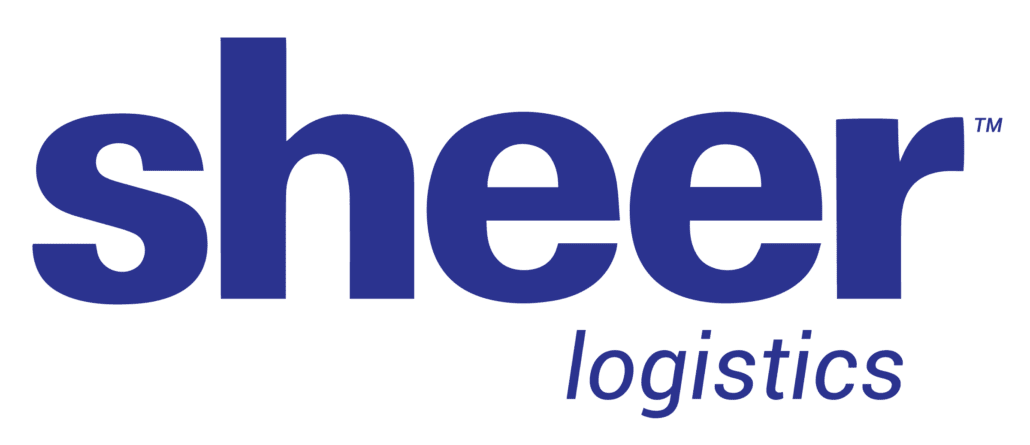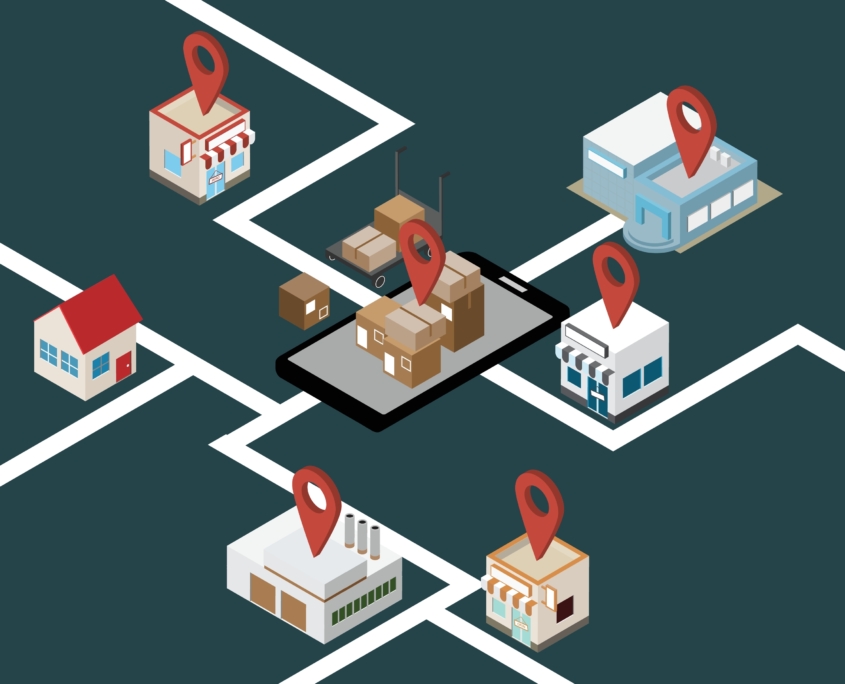
What Is Logistics Visibility?
Logistics visibility is the ability to view, track and monitor the movement of shipments, inventory, and information throughout the entire supply chain, from procurement and production through transportation, warehousing and final delivery. Logistics visibility provides stakeholders with detailed insights into the status of shipments, including location and ETA, inventory levels, and performance metrics associated with supply chain processes.
There are several key components that are needed to create comprehensive logistics visibility:
- Real-time Tracking: GPS, Radio Frequency Identification (RFID) and the Internet of Things (IoT) are used to monitor shipment and inventory locations in real-time.
- Data Integration: Integrating data from disparate systems such as ERPs, Transportation Management Systems (TMS) and Warehouse Management Systems (WMS) and supply chain partners including carriers, suppliers, and warehouses is essential to creating end-to-end, real-time visibility. Leveraging an Integration Platform as a Service (IPaaS) can radically accelerate your overall supply chain visibility initiative.
- Analytics and Reporting: Once your systems have been integrated and your data has been aggregated in a data warehouse or data lake, it is now available for analysis, reporting, forecasting and planning. There are a variety of analytical tools available to provide dashboard-driven insights into performance metrics such as on-time delivery rates, carrier performance, trends in transportation costs and fuel rates, inventory turnover, and more.
- Predictive and Prescriptive Insights: In addition to advanced analytics and reporting, enhanced logistics visibility also sets the stage for predictive analytics insights (what will or may happen in the future, given current inputs) and prescriptive analytics insights (recommended actions to take in response to anticipated future events.
Key Benefits of Supply Chain Visibility
By delivering real-time information and insights regarding the movement of goods, inventory and information, logistics visibility drives numerous supply chain benefits.
Operational Efficiency:
Enhanced supply chain visibility can help you identify inefficiencies such as underutilized assets, excessive idle times, inefficient routes, and other issues that can be addressed to reduce costs, better utilize resources, and streamline your operations.
Customer Satisfaction:
Supply chain visibility not only improves your operational efficiency, but it also makes it easier to keep your customers informed with accurate and up-to-date delivery times, order status, and potential delays. Proactively communicating key shipment information to your customers builds brand loyalty and enhances customer satisfaction.
Data-Driven Decision Making:
Managing a supply chain without access to real-time data is like flying a plane while blindfolded. Supply chain visibility gives you all the data you need to make critical decisions regarding shipment statuses, inventory management, and overall supply chain performance.
Performance Management:
Management guru Peter Drucker famously said, “What gets measured gets managed.” Having seamless access to your logistics data empowers you to measure KPIs such as on-time delivery, inventory accuracy, carrier performance and other key supply chain metrics.
Regulatory Compliance and Risk Mitigation:
Having easy access to data makes regulatory compliance and adherence to sustainability goals much easier while mitigating the risks of noncompliance.
Risk Mitigation:
Logistics visibility also helps supply chain leaders mitigate and proactively address risks related to weather events, natural disasters, shipment delays, and demand volatility.
Enhanced Communication and Collaboration:
Logistics visibility effectively breaks down the silos that may exist within your own organization, while also enhancing transparent communications with your supply chain network partners, including suppliers, manufacturers, customer and carriers.
Agility and Flexibility:
Supply chain visibility helps companies quickly adapt and address customer demands, seasonal or unexpected demand fluctuations, and supply chain disruptions, creating a more agile and flexible supply chain.
Major Challenges of Supply Chain Visibility
Achieving logistics visibility is not always an easy journey. Here are some common obstacles that companies experience along the way.
Supply Chain Complexity
The complexity of your supply chain has a direct impact on your logistics visibility, due to the number of systems, platforms, internal and external stakeholders that need to be connected to maintain consistent and accurate visibility.
Integration Challenges
Integrating diverse internal systems, ranging from ERPs to Transportation Management Systems (TMS), Warehouse Management Systems (WMS), and ecommerce platforms as well as external supply chain partners, including suppliers, manufacturers, retailers, and logistics service providers (LSP) can be a daunting and resource-intensive task. To avoid this bottleneck, many companies opt to work with a LSP that offers integration middleware to connect disparate systems, normalize data, and make it available for reporting and analysis.
Technology and Data Quality Limitations
Integrating your supply chain technology systems with internal and external platforms will only take you so far if the underlying tech stack is limited in its ability to deliver accurate, real-time data. To achieve your desired level of logistics visibility, you may first need to invest in Internet of Things (IoT), RFID, AI-driven analytics or other systems that can provide the data you need.
Cyber Threats
A more connected supply chain can be more vulnerable to cybersecurity threats, as it presents numerous “attack surfaces” that bad actors can attempt to exploit.
Implementation Costs
Investing in the tools and systems you need to capture accurate, real-time data and integrate disparate systems can come with a steep price tag.
Resistance to Change
Beyond technology and resource challenges, change management with respect to people and processes can be one of the most significant hurdles to achieving logistics visibility. Adopting new technology and processes requires not only a monetary investment, but a commitment to train employees on new systems and procedures.
Case Studies / Examples
Bringing shippers out of the “dark”- that is, a non-digitized environment lacking in accurate, real-time data and visibility- is one of the hallmarks of a successful 4PL/Managed Services partnership. Sheer Logistics has assisted numerous shippers on their journey to global supply chain visibility. Here’s an example that not only solved the client’s visibility challenges- but also netted $2.1MM in logistics and transportation costs savings in the first 2 years of the engagement.
Overview
In 2019, GB Inc.*, a fast-growing ground beef provider for foodservice and retail, experienced unexpected sales increases but lacked the carrier relationships and technology to manage the surge. With only a small 3PL partnership and no TMS, GB Inc. needed a comprehensive logistics management solution.
Challenges
While increased sales are typically positive, GB struggled due to limited resources, tools, and partnerships. Managing most transportation internally, they faced challenges meeting growing customer demand and recognized the need for technology and an experienced logistics partner.
Solutions
GB chose Sheer Logistics as their Managed Transportation Services (MTS) partner and TMS provider. Utilizing SheerExchange, Sheer’s proprietary Integration Platform as a Service (IPaaS), Sheer integrated GB’s systems, quickly implementing Sheer TMS. This provided GB with enhanced visibility, increased efficiency, and better control over logistics. Sheer also optimized delivery routes, expanded the carrier network, and introduced a dock scheduling solution to reduce congestion and improve efficiency.
Results
Sheer’s solution transformed GB’s logistics, allowing them to manage increased volumes effectively. Over two years, GB achieved gross savings of $2.1 million. With improved visibility and optimized operations, GB continues to grow, making informed decisions and positioning the business for future success.
*The company name has been anonymized for the purposes of this case study.
How to Achieve Better Supply Chain Visibility
Integrating your data and technology platforms creates a more transparent, collaborative and efficient supply chain. Here are some key steps to help you get started on your supply chain visibility initiative.
- Implement advanced technology, like IoT, RFID, AI (artificial intelligence), machine learning, and a TMS.
- Integrate your ERP, TMS, WMS and other systems to create a unified view of your supply chain.
- Leverage predictive and prescriptive analytics to gain actionable insights.
- Invest in cybersecurity to protect your data and your supply chain operations.
- Standardize data formats and processes to create consistent visibility.
- Collaborate with internal and external stakeholders through enhanced data sharing and communication.
In an increasingly complex and competitive global business environment, logistics visibility can provide your business with the advantage you need to drive consistent growth and profitability. By embracing advanced technologies, integrating data, and fostering collaboration, you can gain the transparency needed to drive operational efficiency, reduce costs, and improve decision-making. Enhanced visibility empowers businesses to proactively manage risks, anticipate potential disruptions, meet customer expectations, and maintain a competitive edge. Investing in visibility is not just about overcoming challenges—it’s about unlocking new opportunities for growth and resilience in your supply chain.
Overview
In 2019, GB Inc.*, a fast-growing ground beef provider for foodservice and retail, experienced unexpected sales increases but lacked the carrier relationships and technology to manage the surge. With only a small 3PL partnership and no TMS, GB Inc. needed a comprehensive logistics management solution.
Challenges
While increased sales are typically positive, GB struggled due to limited resources, tools, and partnerships. Managing most transportation internally, they faced challenges meeting growing customer demand and recognized the need for technology and an experienced logistics partner.
Solutions
GB chose Sheer Logistics as their Managed Transportation Services (MTS) partner and TMS provider. Utilizing SheerExchange, Sheer’s proprietary Integration Platform as a Service (IPaaS), Sheer integrated GB’s systems, quickly implementing Sheer TMS. This provided GB with enhanced visibility, increased efficiency, and better control over logistics. Sheer also optimized delivery routes, expanded the carrier network, and introduced a dock scheduling solution to reduce congestion and improve efficiency.
Results
Sheer’s solution transformed GB’s logistics, allowing them to manage increased volumes effectively. Over two years, GB achieved gross savings of $2.1 million. With improved visibility and optimized operations, GB continues to grow, making informed decisions and positioning the business for future success.
*The company name has been anonymized for the purposes of this case study.
Whether you need full logistics management, carrier sourcing, or help with any part of the logistics process, Sheer Logistics delivers industry experts and cutting-edge technology that deliver bottom-line results.







